In Japanese, osoroshii ko 恐ろしい子 means "what a terrifying child," or "what a terrifying girl," "what a terrifying guy," "what a terrifying person," and so on.
In manga and anime, osoroshii ko refers to a pose of shock, with eyes drawn completely white, and usually with one's index finger placed across the chin, sometimes drawn in monochrome like manga, accompanied by background effects like lightning or flash lines, used when a character has realized the terrifying capability of somebody.
It originates in the drama shoujo manga, Glass Mask, Garasu no Kamen ガラスの仮面. Today, it's pretty much always used in comedy, often sarcastically. It's become a meme.
Anime: Tensei shitara Slime Datta Ken, 転生したらスライムだった件 (Episode 21)
Meaning
Literally, osoroshii 恐ろしい means "terrifying," or "horrifying." That which should be feared. While ko 子, meaning literally "child," can also refer to a person in general.
Due to ko 子 being used more by women than by men to refer to non-children, the phrase osoroshii ko is also used in anime more by girls than by guys.
Examples
For reference, some examples.
Anime: Tensei shitara Slime Datta Ken, 転生したらスライムだった件 (Episode 21)
- Context: Rimuru Tempest リムル=テンペスト, after one young child, Chloe Aubert クロエ・オベール, uses a dangerous spell against him and tells him that he's going to die if he doesn't admit defeat.
- osanai kuse ni osoroshii ko!
幼いくせに恐ろしい子!
Despite being young, [she] is a terrifying child!
Anime: Watashi, Nouryoku wa Heikinchi de tte Itta yo ne! 私、能力は平均値でって言ったよね! (Episode 7)
- Context: Pauline, a child of merchant, never forgets anything related to money, and has memorized every expense and earned income she's had ever since she graduated school.
- {okane ni kansuru} koto wa wasuremasen yo
お金に関することは忘れませんよ
Things [that] {concern money} [I] don't forget.
I don't forget anything related to money. - Upon hearing that, Mile says:
- shounin no chi!
Poorin-san, osoroshii ko!
商人の血!
ポーリンさん、おそろしい子!
The blood of a merchant!
Pauline-san, what a terrifying [girl]!
Anime: Mairimashita! Iruma-kun 魔入りました!入間くん (Episode 8)
- Context: Raim ライム, a succubus, teaches a course of seduction in Babyls, the demon school of the demon world. She uses her special ability to measure the
power levelseductiveness of each student, which is shown in percentages. - 42%, 63%, 51%. She says the lowest she has ever seen is 21%.
- Then she measures Clara クララ, a goofy demon girl and one of the main characters.
- ni... nipa... ni paasento?!
に・・・にぱ・・・2%?!
T... tw... two percent?! - akanbou demo san paasento wa eroi noni
{akanbou yori muku da} to iu no?!
赤ん坊でも3%はエロいのに
赤ん坊より無垢だというの?!
Even babies are [at least] three percent sexy,
[you're] telling [me] that [she's] {more innocent than a baby}?! - oo mai debiru!
オーマイデビル!
Oh my devil!
Anime: Youkai Watch, 妖怪ウォッチ (Episode 2)
- Context: a youkai 妖怪 makes people spill secrets around without thinking, including, for example, the fact that Amano Keita 天野景太 went to toilet to poop.
- {toire no dai ni haitta} koto made barashichau nante,
nante osoroshii youkai nanoda...
トイレの大に入ったことまでバラしちゃうなんて、
なんて恐ろしい妖怪なのだ・・・!
To even tell everyone [that] {[I] went to the toilet to poop},
what a terrifying youkai...!- barashichau
バラしちゃう
(contraction of...) - barashite-shimau
バラしてしまう
To barasu, with barasu being an unwanted outcome. - barasu
バラす
To tell everyone a secret. (lexical causative of bareru バレる, for a secret "to be found out.") - In Japanese, dai 大, "large," and shou 小, "small," may refer to daiben 大便, "feces," and shouben 小便, "urine." In English, the phrases "number 2" and "number 1" are used similarly.
- barashichau
Green: Choromatsu チョロ松
Blue: Karamatsu カラ松
Pink: Osomatsu おそ松
Gray: Ichimatsu 一松
Anime: Osomatsu-san おそ松さん (Episode 7)
- Context: the reaction of the older sixtuplets, when the youngest, Matsuno Todomatsu 松野トド松, tells them:
- shoujiki ni iu yo
正直に言うよ
[I] will speak honestly. - boku wa, niichan-tachi no sonzai ga hazukashii
僕は、兄ちゃんたちの存在が恥ずかしい
I'm ashamed of [your], [my] older brothers', existence.
Anime: Shinchou Yuusha 慎重勇者 (Episode 5)
- Context: the reaction of the Goddess Ristarte when she realizes Mash マッシュ has been badly influenced by the cautious paranoia of Seiya 聖哉.
- Seiya tests Mash by asking how many torches they should buy to investigate the caverns, Mash answers "50," Seiya says the correct answer is "500," while Ristarte stops them to buy just "5" torches.
- kono ko... Seiya ni doku sarete dougu kankaku ga okashiku natteru!
この子・・・聖哉に毒されて道具感覚がおかしくなってる!
This kid... [he] has been corrupted by Seiya and [now his common sense about] items [has become weird]!
Anime: No Game No Life, ノーゲーム・ノーライフ (Episode 5)
- Context: Steph tries to cheat in black jack, makes card counting easier.
- {ikasama wo gyaku ni riyou sarete} makasareta nante
如何様を逆に利用されて負かされたなんて
[I can't believe] [that] {[my] cheating was used [against me] and} made [me] lose.
An example of the phrase used without the image:
- Context: Izumi Konata 泉こなた draws Hiiragi Kagami 柊かがみ on a piece of paper. Her sketch is awfully bad and shows her spitting fire. As Kagami starts getting angry, and is drawn in the anime spitting fire, Konata, in a rose-filled background, says:
- maa..., Kagami-san tte {imeeji-doori no} okata desu yo ne... osoroshii ko!
まぁ・・・、かがみさんってイメージ通りの御方ですよね・・・恐ろしい子!
[My], Kagami-san was {just as [we] imagined [she were]}, [wasn't she]... what a terrifying child!
And an example of the image being used without anything else:
Anime: Ore wo Suki nano wa Omae dake kayo 俺を好きなのはお前だけかよ (Episode 2)
- Context: Akino Sakura 秋野桜 is shook because something unexpected happened, but that's it. Nobody was an osoroshii ko in this scene.
Exceptionally:
Right: Kaneko Sonoka 金子園香
Anime: Masamune-kun no Revenge, 政宗くんのリベンジ (Episode 10, Stitch)
- Context: a double osoroshii ko!
ASCII Art
As ASCII art (author unknown), posted on text boards:
ミミ、 ヾ==- 〃 ゞヾ,〃 ))`ー-==ニ二三 i l >>1 |
`ミミ、 !,-/´゛ ー'_,.-==-_`ー-==ニ l. | エ凡 |
ミミ彡ミ三=-、 { ,' 、-=' 〃 ̄`)〉- `ー/ニ ノ | ハ_ヽヽ|
` y__ '' '- ||||! {-/ /| |
ミミ、 〈,/ヽ ' ー''`` ||| / / | | |
ミミ彡ミ三==- ハ | ||| l / | `ー ' |
〃 "'ーノ i || l/ | l |
彡三='' !〉,\ !.j | /| レ ヽ |
ミミ彡ミ三ン'' ノ ヽ r‐-、 u / l / | フ |
/ /\ `ニ` / l / | ‐┼‐ ヽ
彡三='' _,.-'" / / \ / / / | ' \
ヽ、__ / `ヽ/ `ヽ \
`ー,. / / ヾ〃ヽ ヽ 〉 \\ |
/ 〈 { { { i'ヽ/`i/ / / } { _、// |
ヽ `ーj } } { { / ノ / `ー' i
ノ ノ`ー-‐'ノ ノ ノノ !_l i { { _,./ エ凡
`ー-‐' \__,/ノノ‐-' ,,.-‐''`‐-`!`ー`-- 'ヽ ハ_ヽヽ
i/ / / ((_j } / ,.-‐‐‐‐,'/i i | } ヽヽ
{ { ゝ、_,.ノ l| `‐--‐'、i/ ノ ノ ノ ノ ノ |
`ヽ`ニ-‐ノ l| il|||jノノ ノ- ' / `ー '
ノ `---'" ili; ||ヽ__,./`ー-'{ l
、__/ ノ ノ ノ } ,. '" ヽ /||ヽ__,./i / ヽ_,.i レ ヽ
ヽ__/_/ .ノ-' { { ̄ ̄} } / /ヽ__,./ヽ{ i ノ フ
`、_/_/ノ-'ヽ. '、___,ノ /| ヽ ヽ } ヽ" ‐┼‐
`ー-‐'‐-‐' ヽ -- / l } } } | '
`‐-----‐' `ヽ ___ / l / / / / | |
ヽ _____ノ | l' / / { ・ ・
Origin
The origin of osoroshii ko is the manga "Glass Mask," Garasu no Kamen ガラスの仮面.
In the first chapter, a veteran actress, Tsukikage Chigusa 月影千草, finds a 13 year old girl, the protagonist, Kitajima Maya 北島マヤ, who appears to have talent for acting.
Maya works in a restaurant and goes deliver food to Chigusa. There, Maya mentions having watched a theater play, and Chigusa asks her to tell how that play went.
Maya then starts acting out, albeit poorly, the entire script of the play for over three hours, without mistaking a single line, and even showing to have memorized the poses and hand movements of the actors.
After Maya leaves, Chigusa, amazed by Maya's potential, exclaims:
- osoroshii ko!
恐ろしい子!
What a terrifying child!
As you can see above, in the first time the phrase was used, there was no panel that matched the meme this article is about.
In fact, Glass Mask didn't use the iconic fully-white, iris-less, pupil-less eyes until thousands of pages later.
It started using them as an extremely tense expression, like when a character has just heard some extremely bad news, and, also, as an extremely hostile expression, when a character is acting a ferocious role.
- shirome
白目
White eye. (literally.)
Sclera. The white part of the eye.
Also, contrary to what you'd expect, the phrase osoroshii ko wasn't repeated through the series. Even the iconic panel, with white eyes and an index finger horizontally across the chin, didn't use the phrase osoroshii ko, but something else instead.
- kono ko...!
この子・・・!
This child.
This [girl].
The character who spoke that line and made that pose was the main character's rival, Himekawa Ayumi 姫川亜弓, who was an ojousama お嬢様 character.
For the record, although the pose happened in chapter 12, each chapter of this series has hundreds of pages, and spans multiple volumes. The manga began in 1974, while the 12th chapter began serialization in 1986, ending in 1992.[美内すずえ(Suzue Miuchi) - comich.net, accessed 2020-02-20]
It was basically the penultimate chapter of the manga, before it restarted in 2004, so the meme takes a phrase from the first chapter, and a pose from the almost last chapter, and puts them together.
References
- 恐ろしい子 - dic.pixiv.net, accessed 2020-02-20.
- 恐ろしい子 - dic.nicovideo.jp, accessed 2020-02-20.
- 恐ろしい子!/ ○○…恐ろしい子! - paradisearmy.com, accessed 2020-02-20.
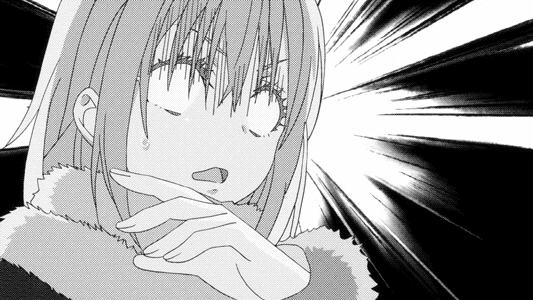
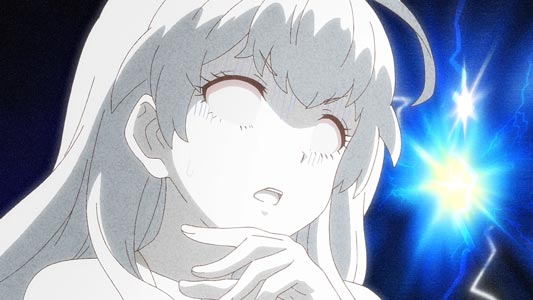
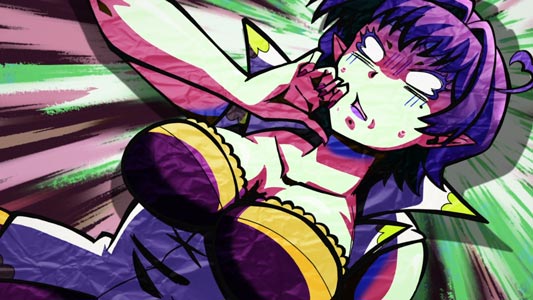
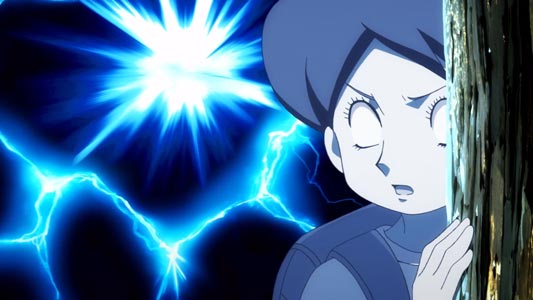
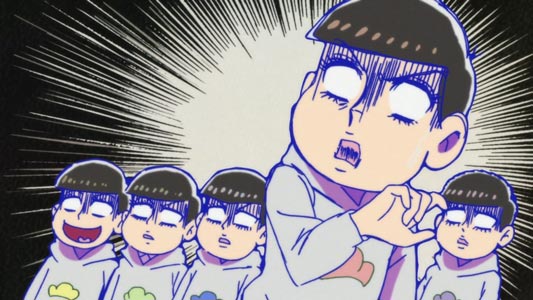
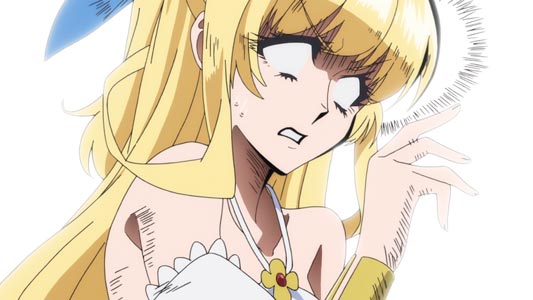
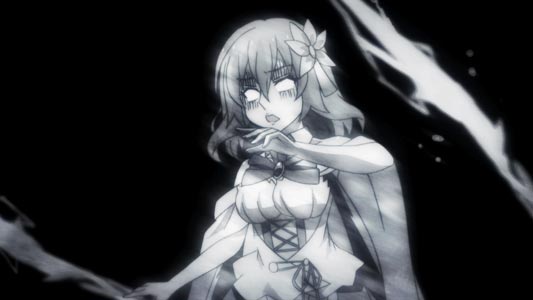
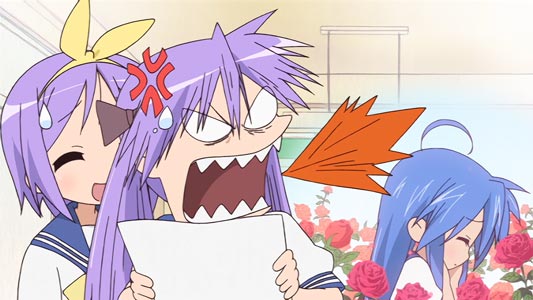
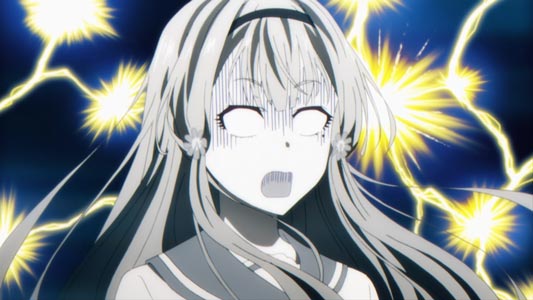
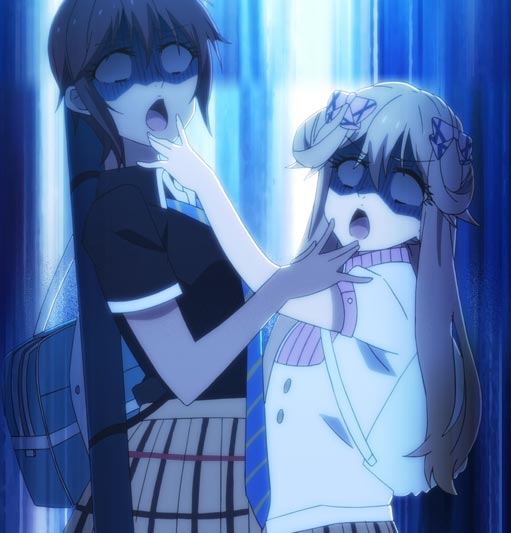
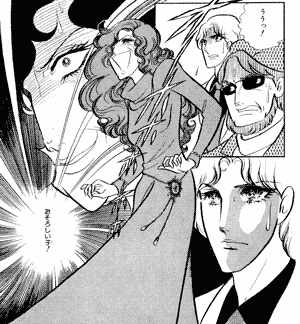
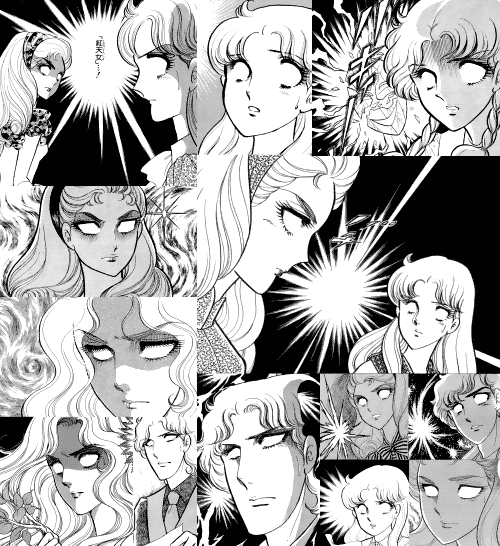

No comments: